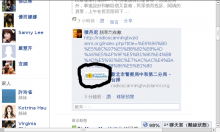If you share a MediaWiki page without any image on social sites, the MediaWiki logo is shown. What is expected is that the site logo is shown, a quite standard behavior in other platforms.
URL: http://lists.wikimedia.org/pipermail/mediawiki-l/2011-July/037710.html
See Also:
- T33338: Export file thumbnail, video preview via Open Graph meta elements as Facebook posting helper
- T64811: Review and deploy TwitterCards extension for proper display
- T58257: Site logo should not be an inline background-image in the html output
- T142243: [EPIC] Add open graph meta tags
Attached:
